- Call us: 01444 237070
- Contact Us
- Stores
- Sign In / Register
-
- Back
- Used Cameras
- Used Accessories
- Used Lenses
- Used Video
- Used Film Equipment
- Used Stock Alert
- Used Blank Test
- Sell or Part Exchange
- Used Clearance
- Recently Added Used Equipment
- Park Picks
- All Used Black Friday Deals
- Faulty
- Trade-In
- Blog
- New in
- Call us
- Contact us
- Stores
- Sign in
- Categories
- Tips & Inspiration
- Reviews
- News
- Events
- Features
- Buying Guides
- Competitions
Photographing Local Wildlife Danny Green
Editors note: Danny Green is a multi award winning UK wildlife photographer, based in Leicestershire who has been capturing the finest that nature has to offer for over 30 years. He had his first Nat Geo feature published in the 2014 issue of National Geographic about Atlantic Puffin. Despite working throughout the UK, the Arctic and other worldwide destinations, Danny shares his thoughts about photographing local wildlife in this blog post. With the world locked down throughout much of 2020 shooting locally has become a widespread topic in an even broader conversation of conservation and wildlife support.
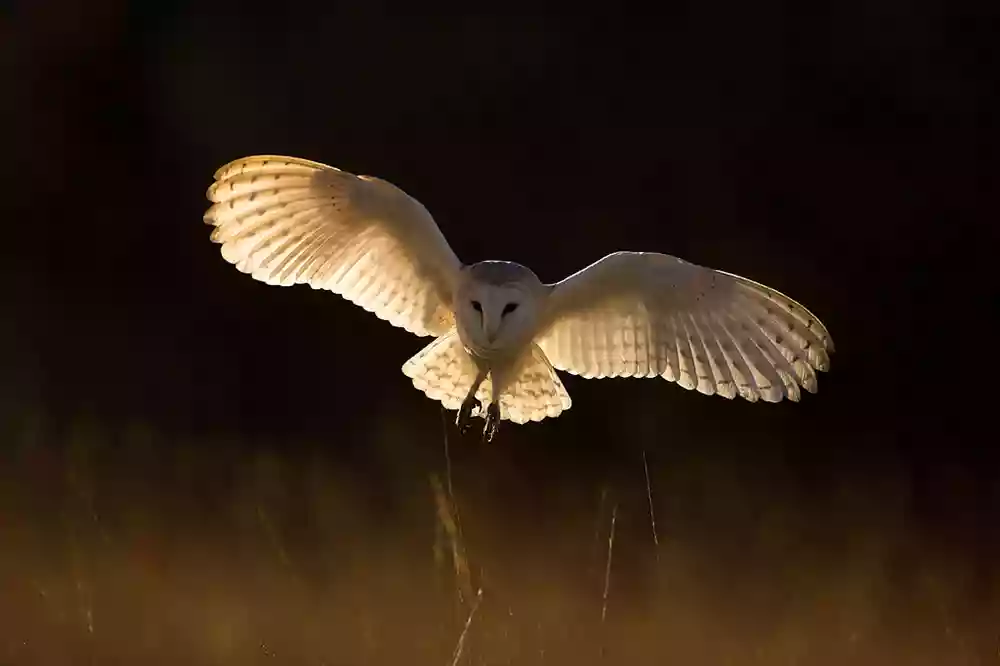
Barn Owl Hunting at Dusk
I had spent the winter trying to photograph this Barn Owl at a site near to my home. I had managed many pictures in what I call normal lighting conditions but noticed how beautiful the Owl looked when there was some strong backlighting being produced by the low winter sun. So, I positioned my hide to deliberately shoot into the sun and by under exposing my shots produced this wonderful studio type background.
I have been photographing the natural world now for over thirty years and during that time I have visited some wonderful places around the world in search of my images. In the early part of my career money was tight and I certainly couldn't afford to jet off somewhere exotic to photograph wildlife so I started off by working locally to where I live and it gave me such a good understanding of the subjects I was photographing. I could dedicate more time to working with a particular subject and that enabled me to understand the animal’s behaviour and habits. It also gave me an intimate knowledge of the environment I was working in, so I knew where the best light was going to be at a particular time of day or year. Once I had gained the knowledge of the subject or waiting for that great bit of light, I could then plan my images accordingly.

Red Fox Sleeping in the snow
Some animals are really difficult to get close enough to be able to photograph them, so you must change tact a little. Foxes can be very elusive but once you start putting out food for them on a regular basis, they become much more relaxed. This little Fox was just sleeping and was so relaxed that he allowed me to get this intimate portrait.
Good wildlife photography is all about patience and so sometimes you would find the light is good, but your subject doesn't show up or vice versa the subject is there, but the light is flat and uninspiring. You also learn from your mistakes in photography and if you get something wrong with the camera settings or wasn't faster enough to capture that bit of action you can always try the next day when you are working locally.

Red Deer Stag roaring at dawn
I am a great advocate of working a location over a long period of time as you can get to know the environment and where the best light is likely to be at a certain time of the day. So, when you do get the right weather conditions you can act quicker. This image is a case in point, the morning was cold with mist hanging in the air. As soon as the sun started to rise it started filtering through the trees producing this ethereal effect. All I needed was a Red Deer Stag to perform and finally I got that little bit of luck.
I have always liked to work with a chosen subject for long periods of time as I find then I build up a portfolio of that subject and then find myself wanting to capture unique aspects of their behaviour that is rarely seen. That is the beauty of being a wildlife photographer as you witness things that are rarely seen as you are spending more time with that particular subject. I am lucky that I live near to Bradgate Park in Leicestershire which is one of the best places to photograph Red Deer in the UK especially during the rutting season. I have been photographing this annual event since I first picked up a camera and I haven't missed a rut in all that time. Each year I treat it like a new adventure, so I come into it with a fresh mind and have new goals and ideas. What I try to do is better what I have managed in the past, whether that is a new bit of behaviour that I haven't photographed before or working in different kinds of light and conditions. It took me a while to realise how good subjects look in heavy rain and that is one advantage I have gained after working with a subject over such a long period of time. Usually photographers run for cover as soon as we feel a bit of rain, but I am the opposite and keep a keen eye out on the weather forecasts to see if we have rain coming. It also has to be the right kind of rain. Light rain where it rains all day is just not good enough as it is hard to show up in your images. Heavy showers are the best when it rains for a short time period and then stops. Not only does the rain droplets show up in your image but also the Deer like to shake the water off their backs and do so as soon as it stops raining. It is a great bit of behaviour to capture.
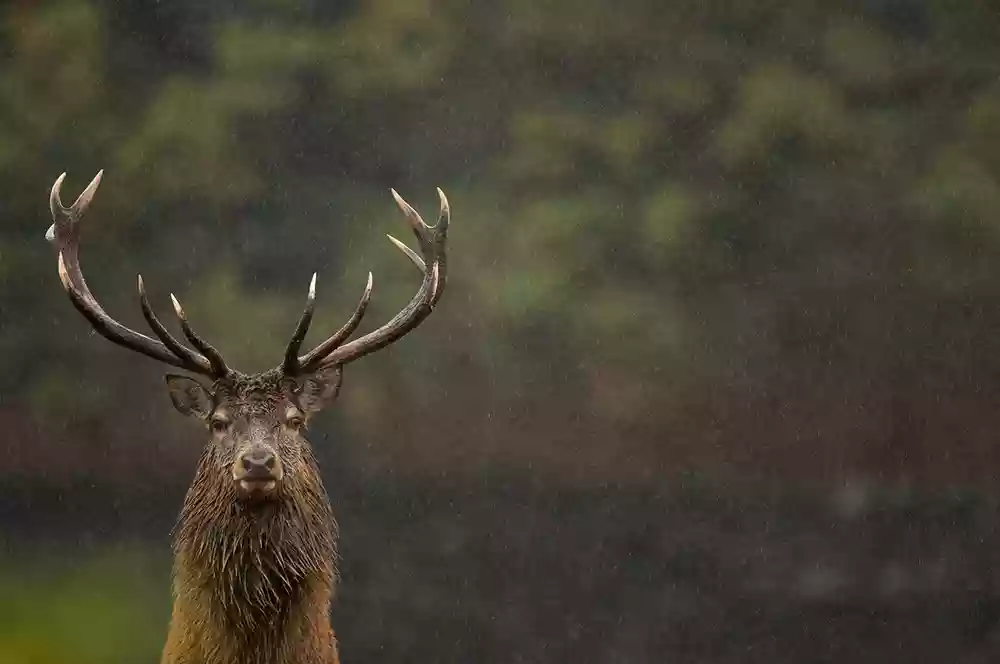
Red Deer Stag in the rain
I love photographing in challenging conditions and heavy rain is a favourite. I came across this large Stag who was quite relaxed in my presence as I know him well. He allowed me to get close enough so I could take a close-up portrait. By getting closer I could then isolate him from the background which then made the rain droplets stand out.
Another great way of photographing wildlife is to attract the wildlife to a particular area by placing out food on a regular basis. This can be done by setting up a small bird feeding station during the winter months or by feeding a family of foxes at the edge of a woodland glade for example. By putting out the food on a regular basis you get your subjects into a pattern and they are used to coming to that area. Then when you are ready to do some photography you can more or less guarantee that you will have a subject in front of your lens. That way when the light looks good you can visit your site for a photography session, or when it looks like heavy rain or falling snow conditions that can make an image really stand out, you can plan to be there at short notice and take advantage of the relevant conditions. Setting up a small bird feeding station is one of the best things that you can do. If you don't have a garden to do this then maybe look to get some permission from a local landowner either in a small belt of woodland to attract woodland birds or even take it to another level and set one up on some farmland for farmland birds. It is always important to ask permission from the landowner where you can and then limit any disturbance. I have rarely been turned down by landowners unless it is in a sensitive area or a local nature reserve. Well there are just a couple of examples of working locally and the benefits that it will bring. Happy shooting, Danny Green.
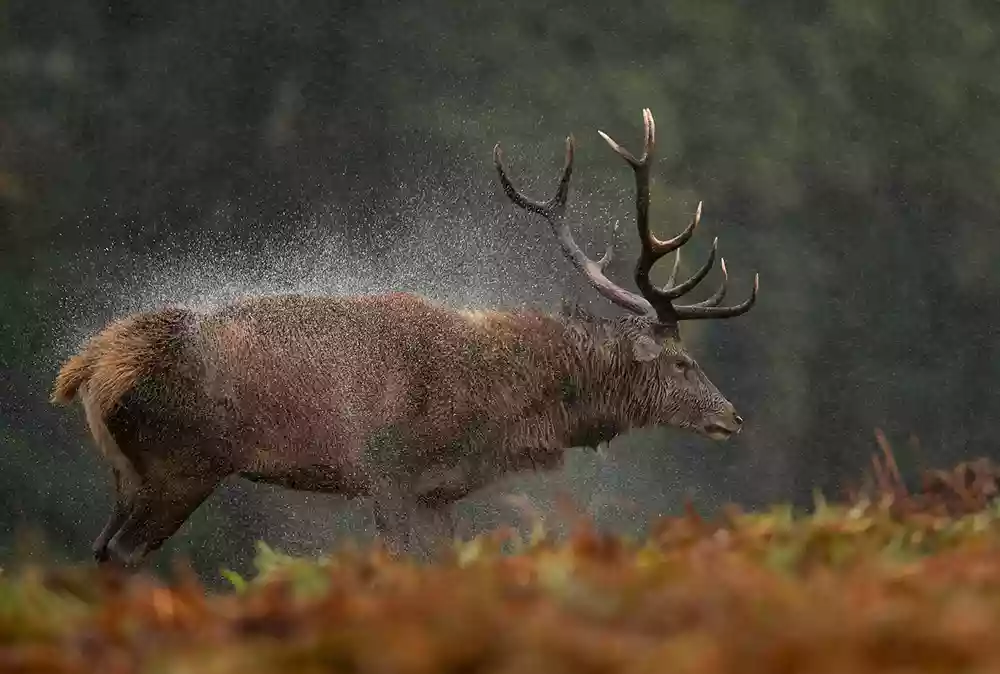
Red stag shaking water of himself
After a heavy rain shower Red Deer like to get the water off their fur and do this by shaking vigorously. It is extremely difficult to get this shot as they do it very fast without any warning and also it is important to get the background right, so the water droplets stand out. This image is a great example of why I keep going back and covering the same species over and over again. I have been after this shot for many years and so finally, I managed to capture it.
Further reading
Check out our buying guide for the best gifts for wildlife photographers here, packed with gear ideas for the wildlife photographer in your life.
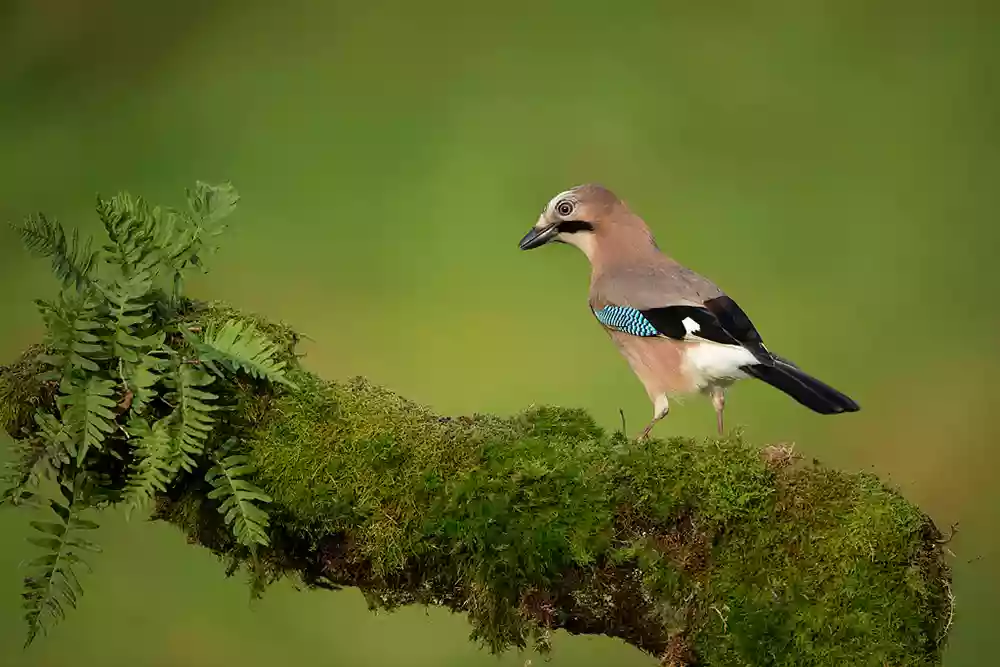
Jay
One of the most productive ways to photograph birds is by setting up a feeding station, especially during the winter months when natural food is in short supply. Lots of different species will quickly take advantage of your food supply. The common garden birds will be first to start visiting but after time you can attract some of the more elusive species like Jay.
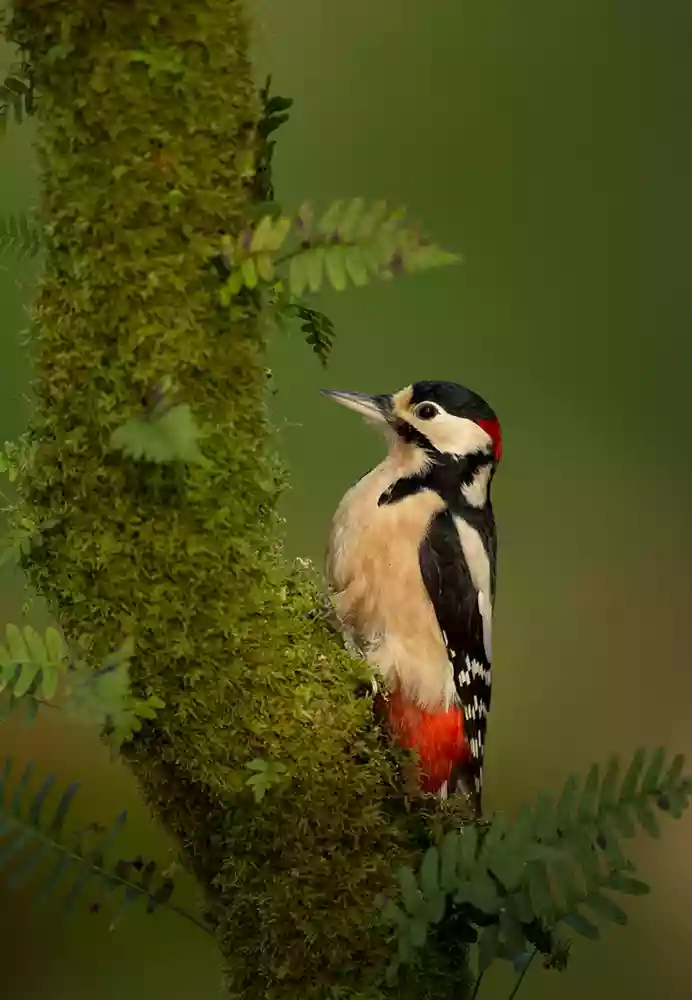
Great Spotted Woodpecker
Once you have established your feeding station you can then start putting out different kinds of foods to attract different species. Nuts and seeds are the best at bringing in most species but if you want to specialise you can then maybe try animal fat placed on the back of a log which will then attract rare birds like woodpeckers. Mealworms are also a good addition to add to your feeding station as they will bring in lots of other species like thrushes.
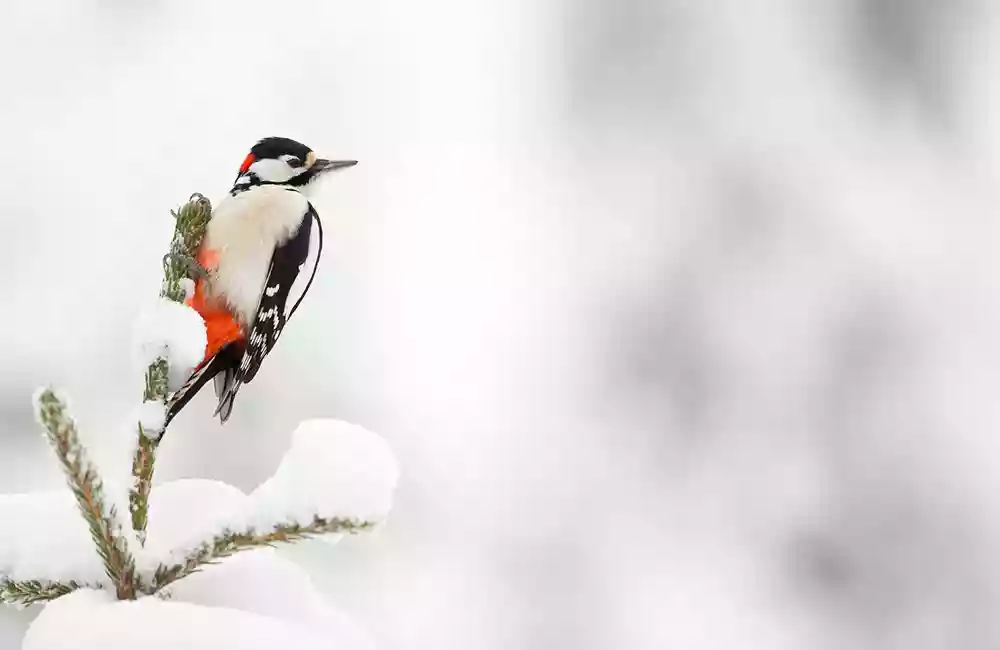
Great Spotted Woodpecker in the snow
The great advantage of having a bird feeding station up and running is it is long term project and so you can work on different species and build up a portfolio. Alternatively, you can work on the one species but throughout your time try adding different settings or props or look out for weather conditions and see what that brings.

Great Tits in falling snow
Working in snow is one of my own favourite situations and so by having a feeding station set-up in your garden or just a local bit of woodland that is within easy access you can then react quickly to the conditions that are available. Even common garden birds like great tits can look good in falling snow.

Goldfinches and reflection
Once you have established your feeding station your world is your oyster and it is all down to your own imagination and skill as a photographer. You can then add different types of props to your setting or even make your own say something like a drinking pool where you can get very natural images of birds drinking.
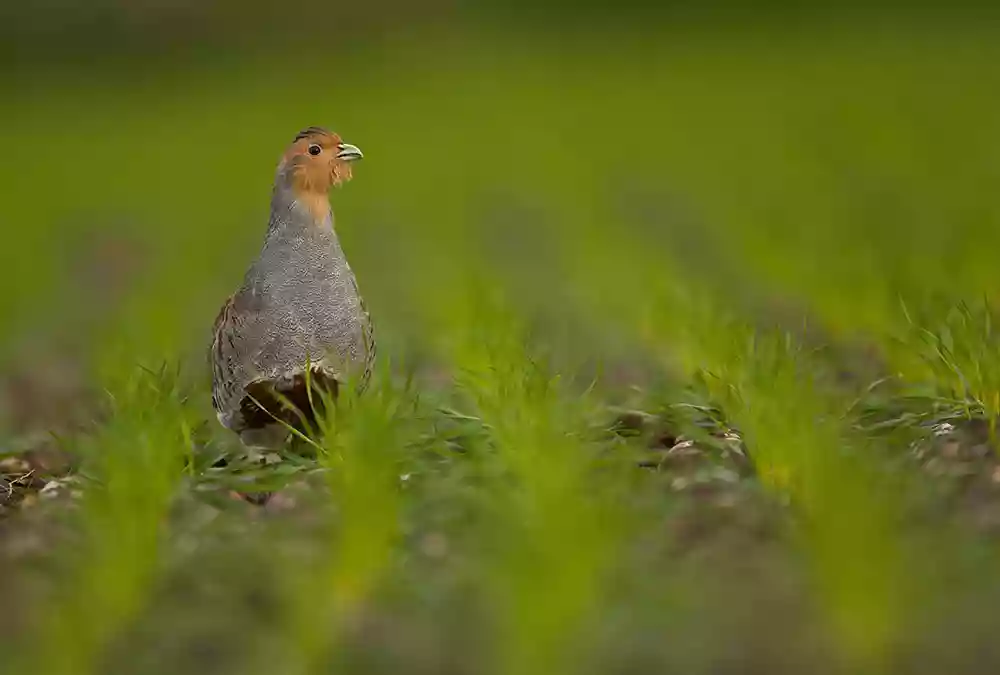
Grey Partridge
Once you have maybe gained the experience of setting up a garden or woodland feeding station you can then take that skill and knowledge to set something else up. Maybe try in different setting like a farmland setting and attract rarer birds like Grey Partridge.

Tree Sparrow on an old roof
I usually have two or three projects on the go at any one time and then I can just flip between the different ones which are working best or maybe because the light is getting better to work with at that certain time of the year. Either way if you want species like Tree Sparrow to keep visiting your feeding stations you must keep up the work in maintaining your site and putting the food out on regular basis. That's why it is always best to work locally.
Our thanks to Danny Green for sharing his beautiful wildlife images with us. Click here for more photography tips and inspiration from renowned photographers working across all genres.
Share this post:
By Park Cameras on 19/12/2020

Trade in your old equipment
Fast and easy trade in service ensures your old gear is collected efficiently and you are paid quickly! It's very simple to trade in your unwanted photography gear. Just head over to our dedicated Sell or Part Exchange page, fill out the details, and we'll get back to you with an offer for your old gear. Take the cash, or put it towards the cost of your new gear. It's up to you! Find out more
sign up to the newsletter
Keep up to date on the latest photography news, events and offers. Sign up now